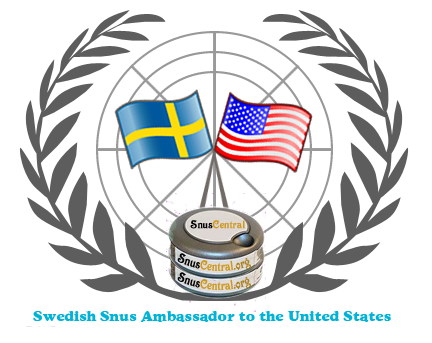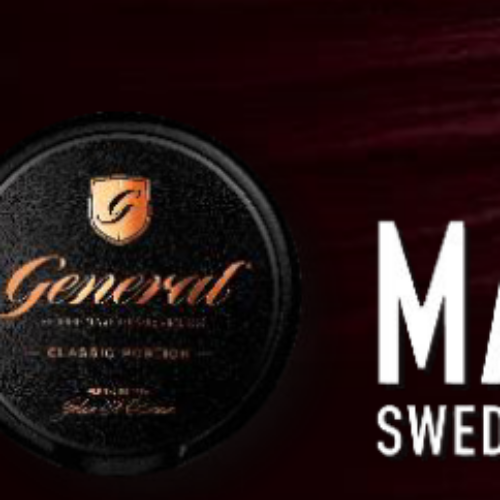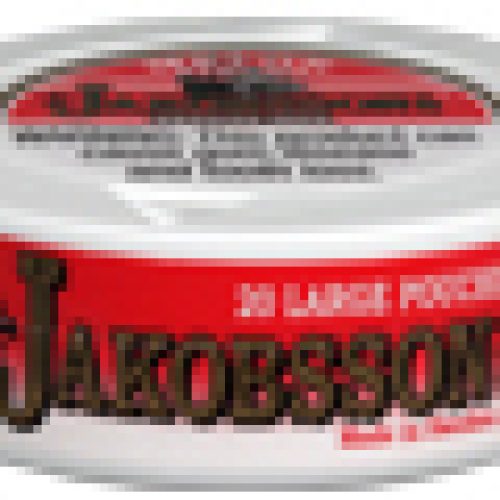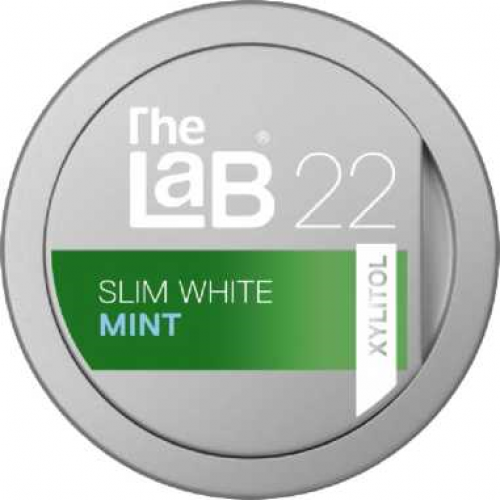FDA Tobacco Czar Mitch Zeller – Substantial Equivalence launch but what’s next for Tobacco?
 FDA Tobacco Czar Mitch Zeller, Ruler of the FDA Center for Tobacco Products (CTP), has announced the first tobacco products to move through the long-awaited substantial equivalence (SE) process. Two new cigarettes from Lorillard, Newport Non-Menthol Gold Box 100s and Newport Non-Menthol Gold Box, were found by FDA to be substantially equivalent to predicate products and blessed with approvals. Four other unknown tobacco products were denied and put to the sword.
FDA Tobacco Czar Mitch Zeller, Ruler of the FDA Center for Tobacco Products (CTP), has announced the first tobacco products to move through the long-awaited substantial equivalence (SE) process. Two new cigarettes from Lorillard, Newport Non-Menthol Gold Box 100s and Newport Non-Menthol Gold Box, were found by FDA to be substantially equivalent to predicate products and blessed with approvals. Four other unknown tobacco products were denied and put to the sword.
Of the 4000 tobacco products submitted to FDA for SE approval, all but about 500 are currently on the market in a provisional awaiting review status. Understandably, the manufacturers of those provisional products are rather anxious how they will fare when under review.
It would be helpful if FDA could have at least released the types of tobacco products rejected if not their manufacturers as well. That’s probably why Congress forbid FDA from publicly sharing any information on rejected SE applications.
Swedish snus; particularly those introduced in the US after the enactment of the Family Smoking Prevention and Tobacco Control Act of 2009, have pending substantial equivalence applications. Swedish Match does have an advantage as a number of their snuses were grandfathered since they were available prior to the Tobacco Control Act cut-off.
If Lorillard’s two new cigarettes were approved on the basis that they are equally (but not more) dangerous than their pre-Tobacco Control Act predecessors, logically the same would hold true for the extremely less harmful than cigarettes Swedish Match snuses created both before and after Tobacco Control Act took effect .
By not being able to tell us even what category of tobacco products the four rejected products fell under, Swedish snus and other reduced risk tobacco products continue to circle in a rather frustrating FDA holding pattern in the US.
Mitch Zeller: Fear and Loathing in Las Vegas
Appointed in March 2013 as Tobacco Czar after the rather hasty departure of Dr. Lawrence ‘Bopper’ Deyton, Zeller has kept the tobacco community walking on egg shells.
In his blog post yesterday, FDA Announces First Decisions on New Tobacco Products, Mr. Zeller gives a quick albeit incomplete version of his resume. Mr. Zeller did serve previously at FDA for 7 years ending in 2000. The condensed resume neglected to mention that between his current and former stints at FDA, Zeller was employed by Pinney Associates, a pro-Big Pharma health policy consulting firm.
Among his clients was GlaxoSmithKline Consumer Healthcare on issues related to the treatment of tobacco dependence….think nicotine gum, nicotine patches, and other disappointing products which in practice served primarily to separate desperate nicotine addicts from their money.
I had the opportunity to observe Mr. Zeller up close during a panel discussion at the National Association of Tobacco Outlets (NATO) Show in Las Vegas earlier this year.
Zeller began his opening remarks by stating he would not be taking any questions or discussing menthol, nicotine, or substantial equivalence as these were still works in progress at CTP. Since those topics were the reason most of us attended this panel discussion in the first place, little worth reporting of a substantive nature came out of that session.
Zeller continued with his remarks. The only break in his eerily calm veneer came while he was speaking about tobacco and children. He called on the tobacco retailers and FDA to work together stop the cigarette addiction cycle.
He reached a point where he began “that if we could only stop that child from buying that first pack of cigarettes” where for the briefest moment, his voice cracked and unguarded emotion flashed across his face. Mr. Zeller was a Believer. Uh oh. Was he anti-cigarette or anti-all-tobacco?
I was sitting in the front row directly in front of Mr. Zeller and I found his angst at first stunning until I remembered Zeller was also former Executive Vice President of the American Legacy Foundation. Legacy is major anti-tobacco group focused in large part on smoking prevention and cessation among children and the younger adult demographic.
Ironically, the American Legacy Foundation was born as a result of the Master Tobacco Settlement in 1999 and so is funded by Big Tobacco; at least for another year. American Legacy also receives voluntary funding from GlaxoSmithKline and Pfizer.
Pfizer is the manufacturer and distributor of the anti-smoking pills Chantix (US) and Champix (the rest of the world).
As of January 2013, there were 2500 lawsuits pending against Pfizer from individuals or their surviving family for Chantix side effect-related suicides and clinical depression in people who were not suffering from clinical depression prior to taking Chantix. In Australia, at least 12 suicides were linked to Champix use.
Should we fear Mitch Zeller as our new FDA Tobacco Czar? At this point in our story, he is Anti-Cigarette/Big Pharma Friendly.
A short time later, he was asked his opinion on e-cigarettes. Zeller replied with a cryptic smile and said he found them “interesting”. Many of the attendees were excited by that answer and found it encouraging.
His use of the word ‘interesting’ in that context instantly brought to my mind the old Chinese saying “may you live in interesting times”. The Chinese did not mean that in a positive way.
In the past, Mitch Zeller has strongly supported the classification and regulation of e-cigarettes and vapor products by FDA as tobacco products…..unlike GlaxoSmithKline’s Nicorette and Nicoderm nicotine products.
Was this conflicting standard on nicotine just Mr. Zeller serving the best interests of his then-Pinney Associates clients or was this the mindset he was bringing to FDA?
I left the NATO Show leaning towards Zeller being Anti-Cigarette/Pro-Regulation/and now Pro-Big Pharma
The Continuum of Risk
A few weeks after my return to the SnusCentral Bunker, I came across an article Mitch Zeller wrote for The BMJ a few months before taking the Tobacco Czar position at FDA CTP.
My first reaction was “this is NOT good”. The BMJ Group was essentially an anti-all-tobacco extremist group. I receive their emails all the time.
It was also worrysome that on two occasions in his article, Zeller referenced the source as Campaign for Tobacco Free Kids. CTFK is a pure anti-all-tobacco propaganda machine and epitimizes anti-tobacco extremism for profit.
With some foreboding, I began reading Mr. Zeller’s Reflection on the ‘Endgame’ for Tobacco Control. I was pleasantly surprised to find myself nodding in agreement more frequently than not.
Mr. Zeller supports a policy he calls “Continuum of Risk”. His premise is that there are different levels of harm associated with different nicotine-containing products. Tobacco control efforts should begin with the most harmful products while also accepting the fact that nicotine use of some form is going to remain for quite some time.
At the extreme top of the danger scale are cigarettes and combustible tobacco products. At the extreme bottom of Zeller’s reduced harm scale are Big Pharma nicotine gum, nicotine patches, and nicotine lozenges.
Between these two extremes are the products which are less harmful than cigarettes but, as he puts it, for which less is known about their population-level health impacts. It is in this category where smokeless tobacco, dissolvable tobacco products, and e-cigarettes would fall.
I do disagree or question a few of the statements Zeller makes but named differently, I have been supporting the policy of Continuum of Risk for the last 6 years. Where I disagree with Mr. Zeller is the product placement in the spectrum of risk.
For example, I fail to see any significant difference between Big Pharma nicotine lozenges and Big Tobacco dissolvable tobacco products. Both use nicotine in a candy, fruit or mint flavored base designed to ultimately dissolve in the mouth. While it is designed to be chewed instead of dissolve, nicotine gum is an oral product containing nicotine in a candy, fruit or mint flavored base. Why aren’t dissolvable tobacco products classified at the same level as the Big Pharma products?
E-cigarettes are a whole other issue politically, emotionally and especially financially because incredibly huge profit potential already been experienced. Despite being a very effective non-combustible substitute for cigarettes, I agree with Zeller in that not enough is known about vaping yet, particularly concerning the long-term effects of inhaling concentrated propylene glycol or even glycerine of unknown/unregulated purity. His middle category is an appropriate place to rate e-cigarettes/vapor until more is known.
It is when we discuss smokeless tobacco in the context of harm reduction that I become frustrated. The global category “Smokeless Tobacco” covers a large number of unique sub-categories. There are a number of smokeless tobacco products made in Asia and India which are extremely carcinogenic. On a risk scale, I would place them not too far below cigarettes.
Reynolds and Altria make and market their version of snus under the Camel, Marlboro, and Skoal brands in the US. I have no idea how these are made, what processes are used, or what ingredients make up American snus. These products only began appearing during the last 6 years so there are no research studies or clinical trials to look at, at least for the American public. These products are appropriately classified as smokeless tobacco in Zeller’s spectrum of harm.
But at the extreme low end of the spectrum, there should be the smokefree tobacco known as Swedish snus.
Regulated by the Swedish government as a food product since 1970, there are over 40 years of studies, empirical evidence, and the living laboratory of Sweden itself which demonstrate modern Swedish snus is 98 to 99% less harmful to a smoker when compared to cigarettes. Since using snus does not involve any spitting, any second hand health issues involving saliva don’t exist.
Swedish males have the lowest instances of mouth, gum, throat, lung, stomach, and pancreatic cancers then those of any other EU nation. Sweden has the lowest adult male smoking rate in the EU but an roughly equal percentage of nicotine users. Using Swedish snus also raises the pH in the mouth, killing the bacteria which cause tooth decay. [Editor’s Note: the last is not a slam at Big Tooth Care. Continue brushing and flossing, snusers!]
There are literally decades of detailed studies, research, and even multiple double-blind clinical trials which clearly and emphatically point to steam pasteurized Swedish Snus as being roughly equivalent to French Roast Coffee in terms of health risks.
Most importantly, Swedish snus works in significantly reducing or eliminating cigarettes from the lives of nicotine addicted smokers. Given that nicotine gum and patches fail 93% of the time in keeping former smokers from returning to cigarettes by the one year mark, Swedish snus is a remarkable and very effective tool to use in the crusade against combustible tobacco products.
Mr. Zeller, I would very strongly encourage you to take a hard look at Swedish snus, move it to the lowest tier of your continuum of risk spectrum, and using the voice the CTP gives you, promote the option of snus made in Sweden with the same vigor Big Pharma nicotine products enjoy today. The population-health impacts are clearly known and the information easily attainable.
I’ve heard and read other information; both positive and negative, on Mr. Zeller’s past and possible future actions. One thing I am sure of; unlike Bopper, Zeller sets and accomplishes each benchmark toward his ultimate goal with determination and does so quickly.
After 3 years of wandering in the wilderness, yesterday’s proclamation on the first six substantial equivalence applications clearly demonstrates the CTP under Zeller is moving forward.
We can expect deeming regulations, probably on e-cigarettes first, and the menthol issue finally being addressed next. Nicotine level regulation in (hopefully) just combustible tobacco products should follow.
So should we fear Mitch Zeller as our new FDA Tobacco Czar?
This brings us back to the central question should we fear Mitch Zeller as our new FDA Tobacco Czar?
I wish I could end this piece with a definative yes or no as I’m sure you do too.
I am more optimistic than I was when Mr. Zeller was first appointed but he is definitely someone I would not want sitting across from me at a poker table.
My sense is he is a reasonable man. He will listen to other points of view and consider them in his calculations. That in itself is very welcome and has been sorely lacking in the past.
Only time will tell if Mitch Zeller is an anti-tobacco/pro big pharma extremist to be feared or exactly what the FDA CTP, the healthcare community, and nicotine-addicted Americans need. At least time is finally moving forward at the FDA CTP again.
Either way, I don’t think we’re going to have to wait too long to find out.
LARRY WATERS
Swedish Snus Ambassador to the United States
Reporting for SnusCENTRAL.org

About author
You might also like
General Mackmyra Whisky Snus – the Worst Kept Snus Secret now Official
Since 2014 Swedish Match and Mackmyra Whisky have been secretly collaborating on a premium whisky snus project; General Mackmyra Whisky Snus. The release was timed to occur in 2016; the
Jakobsson’s Snus has FDA Setback and Discontinues 6 Snuses
Swedish Snus manufacturer Gotlandssnus AB, makers of the Jakobssons, Gotlands, and Gotlandssnus brands of snus, suffered a defeat at the hands of the US FDA, a source in Sweden reported.
Snus Psychology at Work in The Lab at Swedish Match
Psychology has always played a major roll in product development and marketing. Words like bigger, stronger, faster, better, and safer are only a few of hundreds of examples. Read the



